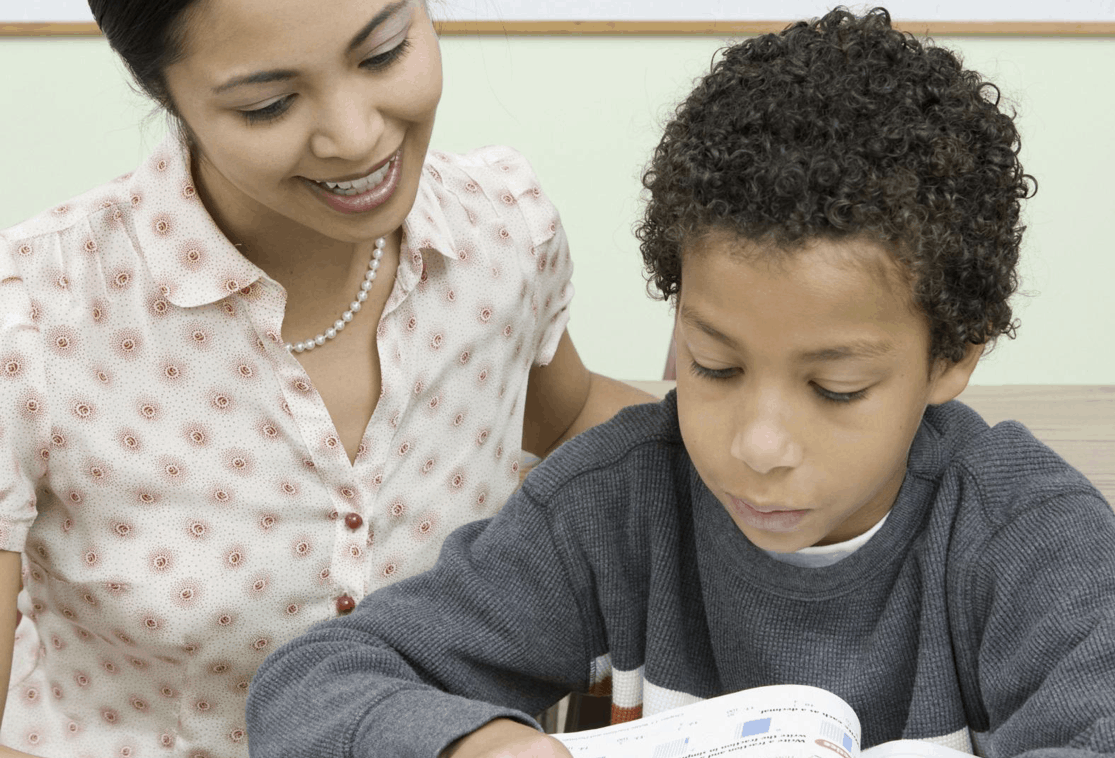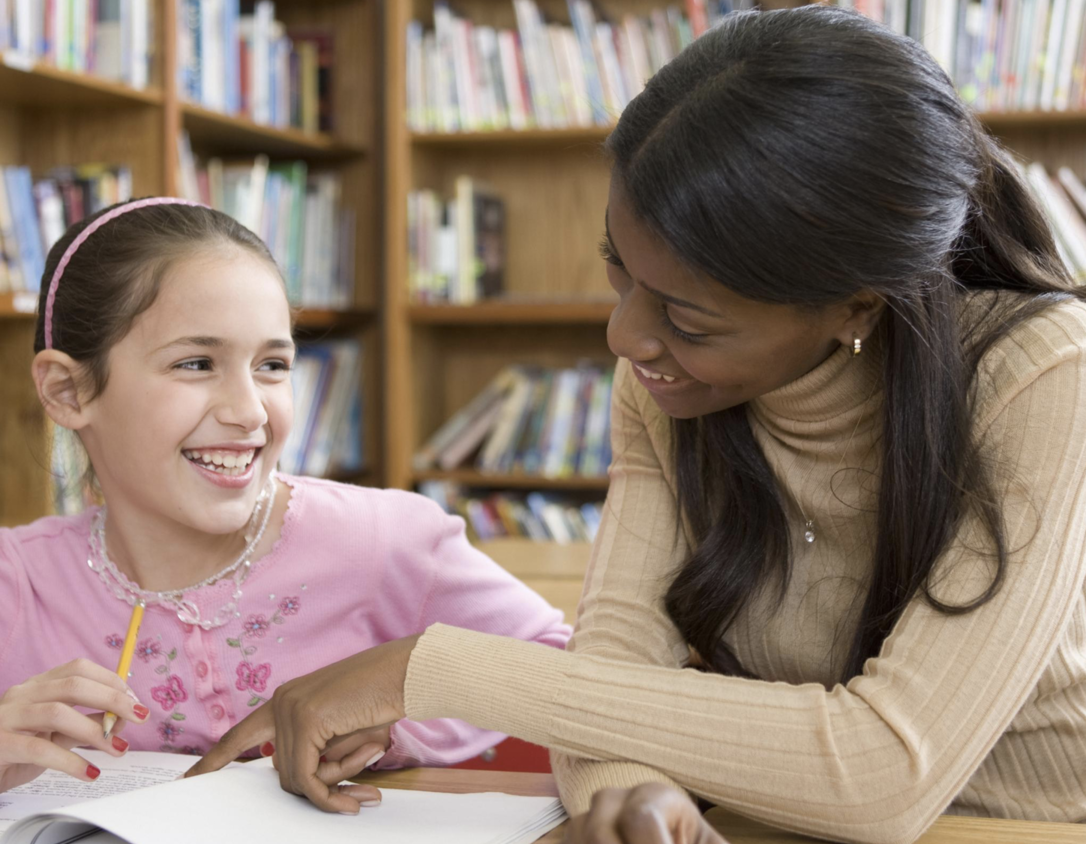How Do Schools Assign Students To Teachers
Call up nearly your favorite teacher from elementary schoolhouse. What made them so special? Mayhap they were the first person who helped math "make sense" to y'all, or peradventure they permit y'all borrow books from their classroom library. The wisdom and mentorship that teachers provide tin be life irresolute, particularly for younger students.
Educators oftentimes focus on improving parent date, but student date is merely as essential. The more self-motivated a student is as they learn to read, the amend prepared they'll be to reach their potential. Ane of the best ways to encourage this is by building meaningful teacher-educatee relationships.
Want to larn why instructor-student relationships are so of import and how to facilitate them in your schoolhouse? Acquire about the challenges facing instructor-student interaction, how positive relationships tin can improve your schoolhouse surround, and five tips for promoting student engagement.
Challenges Facing Positive Instructor-Pupil Relationships
One of the greatest problems facing teacher-student relationships is that many children aren't going to class. Chronic absenteeism, or missing at to the lowest degree 15 days per school yr, is increasingly common among students and comes with worrisome results.[one] In early on grades, chronic absenteeism can predict high school dropout rates later on.[2] And if a child isn't in class, building relationships with these students tin seem near impossible.
 Additionally, students who accept had poor experiences with adults in the past can have a hard fourth dimension trusting teachers.[3] This could apply to students whose previous teacher treated them unfairly as well as children from abusive or neglectful homes. In many cases, you might not know everything almost a child's background. If you're having a hard time reaching a student, go along in mind that the problem might be a traumatic by, not you.
Additionally, students who accept had poor experiences with adults in the past can have a hard fourth dimension trusting teachers.[3] This could apply to students whose previous teacher treated them unfairly as well as children from abusive or neglectful homes. In many cases, you might not know everything almost a child's background. If you're having a hard time reaching a student, go along in mind that the problem might be a traumatic by, not you.
Children from under-resourced backgrounds are most likely to take poor relationships with their teachers.[4] The reasons for this are varied. It could be because teachers are more likely to view these students with personal biases. Or in some cases, these children might not accept access to the transportation or academic support they need to succeed. Whatever the cause, educators should be mindful of these children when determining how to engage their students.
Sometimes, behavioral or learning disorders can go far difficult for teachers and students to understand each other. Children with autism spectrum disorder, for example, might have communication styles that misfile their peers. Learning disorders like dyslexia or attention-deficit hyperactivity disorder (ADHD), too, tin limit a child's attending bridge and frustrate their teachers. Any plans yous brand for how to connect with your students should include accommodations for these and other conditions.
How Positive Instructor-Student Relationships Lead to Academic Achievement
Building rapport with your students and establishing yourself as their mentor is an fantabulous style to combat chronic absence.[5] Students are more motivated to attend classes if they know their teacher cares about them and will assistance them succeed. And by improving school engagement, these relationships can also ameliorate academic accomplishment.
Even in elementary school, unexcused absences are linked to dropping grades, particularly in math.[half-dozen] By motivating students to piece of work difficult and miss fewer lessons, teacher-student relationships can keep struggling students from falling behind and close the achievement gap in educational activity. Information technology's ane of the longest-lasting ways a teacher tin can impact educatee achievement and career success.
Personal connection with your students can also heighten their intrinsic motivation to learn.[7] When students feel interested in their piece of work for the sake of mastering it, they develop a love of learning that volition do good them for their entire lives. Plus, they're also more likely to accept positive attitudes towards their teachers, classes, and lessons.[8] When students focus less on grades and more on mastery, they're on their mode toward a successful school career.
Lastly, these relationships tin even tie into your social-emotional learning (SEL) curriculum. Positive teacher-pupil connections can help children develop self-regulation skills, particularly autonomy and self-decision.[9] Every bit students learn how to evaluate and manage their behavior, they'll be able to accomplish their personal and academic goals.[ten] And over fourth dimension, this tin can reduce failing grades and the need for redirection.
In short, teacher-student relationships can promote school success in the following ways:
- Strengthens academic achievement
- Reduces chronic absenteeism
- Promotes self-motivation
- Strengthens self-regulation
- Improves goal-making skills
Other Ways Building Relationships Leads to Student Success
Beyond bookish success, getting to know your students can improve classroom beliefs management. Under-resourced students whose teachers work with them as a mentor are more than likely to develop socially appropriate beliefs.[11] When struggling students are treated as bad or unintelligent by their teachers, they're unlikely to change. But when teachers make an effort to care about and help them, these students are more than capable of growth.
 Effective advice between teachers and students can also strengthen your school atmosphere. Considering these relationships are so closely tied to cocky-motivation, they can lead to an engaged classroom.[12] Your classroom can transform into an platonic learning environs where students are not only prepared but excited to learn. Plus, when students appoint themselves in the lesson, they're less probable to need subject field during class.
Effective advice between teachers and students can also strengthen your school atmosphere. Considering these relationships are so closely tied to cocky-motivation, they can lead to an engaged classroom.[12] Your classroom can transform into an platonic learning environs where students are not only prepared but excited to learn. Plus, when students appoint themselves in the lesson, they're less probable to need subject field during class.
A teacher's bear on on their students can last long after the terminate of the school twelvemonth. After a student has a meaningful connection with their teacher, they're more probable to form similar relationships in the futurity.[13] Considering these relationships can give students the guidance and support they demand to succeed, it is essential to nurture them in schoolhouse. This is specially helpful for older elementary children, as strong teacher-pupil relationships tin aid ease the transition into centre school.[14]
Building positive relationships with students tin help teachers, too. 25-40% of new teachers are likely to leave the education field within 5 years.[fifteen] But positive relationships with students tin can reduce this number and bear witness teachers how their career changes lives.[16] If you're looking for a greater sense of fulfillment in your career, try interacting with your students and helping them with their individual struggles.
How to Improve Pupil Engagement with Meaningful Connection
One of the simplest and about effective student engagement strategies is getting to know your students on a personal level. Once you recognize how instructor-student relationships tin revolutionize your classroom, you lot can prepare your entire school for lasting success.
Keep these five tips on how to build trust and connect with students to create an ideal classroom environment:
- Call up to put your heart into your lesson plans. Try to focus just as much on getting to know and guiding your students as you lot do on teaching bookish concepts [17]
- At the beginning of the year or semester, talk over your and your students' expectations as a class. You lot can also hold private meetings to help struggling students reach their goals [18]
- Studies suggest that storytelling tin can help build instructor-educatee relationships. Try telling personal anecdotes during class or making storytime a regular activity to connect with your students [19]
- Learn how to construct positive comments by giving specific compliments (e.g. "skillful job" vs "your art project is and then colorful") and fugitive back-handed compliments (e.g. "you lot're not as bad equally yous used to be") [20]
- Make sure you go on healthy boundaries with your students. If a pupil upsets or frustrates y'all, don't have information technology personally or bring it dwelling with you lot [21]
Sources:
U.S. Department of Education. Chronic Absence in the Nation'due south Schools. Retrieved from ed.gov: https://www2.ed.gov/datastory/chronicabsenteeism.html.[1]
Sheldon, Southward.B., and Epstein, J.L. Getting Students to School: Using Family and Customs Involvement to Reduce Chronic Absenteeism. School Community Journal, 2004, 14(two), pp. 39-56.[2]
Varga, One thousand. The Effect of Teacher-Educatee Relationships on the Bookish Engagement of Students. Retrieved from mdsoar.org: https://mdsoar.org/bitstream/handle/11603/3893/VargaMeagan_paper.pdf?sequence=one&isAllowed=y.[3]
Ibid.[4]
Sheldon, S.B., and Epstein, J.L. Getting Students to School: Using Family unit and Customs Involvement to Reduce Chronic Absenteeism. School Community Journal, 2004, fourteen(2), pp. 39-56.[5]
Gottfried, M.A. Excused Versus Unexcused: How Pupil Absences in Elementary Schoolhouse Touch on Bookish Accomplishment. Educational Evaluation and Policy Analysis, December 2009, 31(4).[six]
Reis da Luz, F.Southward. The Relationship between Teachers and Students in the Classroom: Communicative Language Education Approach and Cooperative Learning Strategy to Meliorate Learning. Retrieved from bridgew.edu: https://vc.bridgew.edu/cgi/viewcontent.cgi?article=1020&context=theses.[7]
Andersen, J.F., Norton, R.W., and Nussbaum, J.F. Iii investigations exploring relationships between perceived teacher communication behaviors and student learning. Advice Education, 1981, 30, pp. 377-92.[8]
Varga, M. The Effect of Teacher-Student Relationships on the Academic Engagement of Students. Retrieved from mdsoar.org: https://mdsoar.org/bitstream/handle/11603/3893/VargaMeagan_paper.pdf?sequence=1&isAllowed=y.[9]
Reis da Luz, F.Southward. The Relationship between Teachers and Students in the Classroom: Chatty Language Didactics Approach and Cooperative Learning Strategy to Improve Learning. Retrieved from bridgew.edu: https://vc.bridgew.edu/cgi/viewcontent.cgi?article=1020&context=theses.[10]
Hall, P.S., and Hall, N.D. Building Relationships with Challenging Children. Educational Leadership, 2003, 61(ane), pp. 60-63.[eleven]
Varga, Chiliad. The Effect of Teacher-Student Relationships on the Bookish Engagement of Students. Retrieved from mdsoar.org: https://mdsoar.org/bitstream/handle/11603/3893/VargaMeagan_paper.pdf?sequence=1&isAllowed=y.[12]
Ibid.[13]
Reis da Luz, F.Southward. The Relationship betwixt Teachers and Students in the Classroom: Chatty Language Teaching Arroyo and Cooperative Learning Strategy to Meliorate Learning. Retrieved from bridgew.edu: https://vc.bridgew.edu/cgi/viewcontent.cgi?commodity=1020&context=theses.[xiv]
Sheldon, Southward.B., and Epstein, J.L. Building early career teacher resilience: The role of relationships. Australian Journal of Teacher Education, 2013, 38(four), pp. 1-16.[xv]
Ibid.[16]
Pattison, P., Hale, J.R., and Gowens, P. Heed and Soul: Connecting with Students. Journal of Legal Studies Education, 2011, 28(1), pp. 39-66.[17]
Varga, M. The Result of Teacher-Pupil Relationships on the Academic Engagement of Students. Retrieved from mdsoar.org: https://mdsoar.org/bitstream/handle/11603/3893/VargaMeagan_paper.pdf?sequence=1&isAllowed=y.[eighteen]
Mello, R. Building Bridges: How Storytelling Influences Teacher/Student Relationships. Retrieved from eric.ed.gov: https://files.eric.ed.gov/fulltext/ED457088.pdf.[19]
Lehigh University College of Educational activity. Positive Teacher-Educatee Human relationship Quick Reference Guide. Retrieved from lehigh.edu: https://cpb-united states-w2.wpmucdn.com/wordpress.lehigh.edu/dist/five/114/files/2016/11/Teacher-Student-1iceq82.pdf.[20]
Bluestein, J. The Fine art of Setting Boundaries. Retrieved from educationworld.com: https://www.educationworld.com/a_curr/bluestein-setting-educatee-boundaries.shtml.[21]
Source: https://www.waterford.org/education/teacher-student-relationships/

0 Response to "How Do Schools Assign Students To Teachers"
Post a Comment